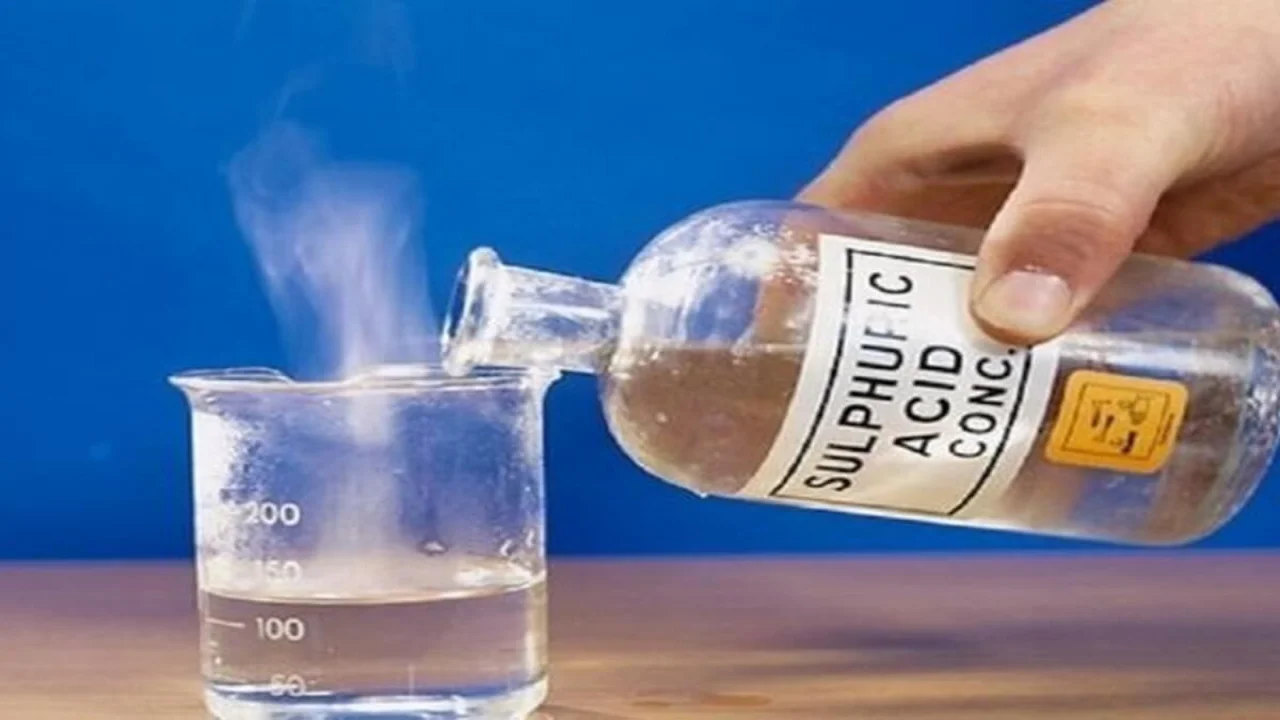The King of Chemicals: Unlocking the Power and Potential of Sulphuric Acid
Discover the vital role of sulphuric acid, known as the “King of Chemicals,” in industries like fertilizers and pharmaceuticals. Learn about its manufacturing process, safety precautions, environmental impact, and future market trends.

Sulphuric acid, often referred to as the “King of Chemicals,” is a pivotal substance in various industrial processes. Its versatility and effectiveness make it a crucial component in sectors such as fertilizers, pharmaceuticals, and chemical synthesis.
Understanding Sulphuric Acid
What is Sulphuric Acid?
Sulphuric acid (H₂SO₄) is a dense, colorless, oily liquid known for its highly corrosive properties. As a strong acid, it can react violently with water, generating heat and releasing fumes. Its ability to dehydrate organic materials makes it invaluable in various chemical reactions and industrial applications.
Historical Significance
Sulphuric acid has a rich history dating back to the 9th century when it was first produced by the Arab alchemist Jabir ibn Hayyan. Since then, it has evolved into one of the most widely produced industrial chemicals globally. Today, millions of tons of sulphuric acid are produced annually, underscoring its importance in the modern chemical industry.
Industrial Applications of Sulphuric Acid
Uses of Sulphuric Acid in Industry
Sulphuric acid is instrumental in numerous industrial applications:
- Fertilizer Production: One of the primary uses of sulphuric acid is in the manufacturing of fertilizers, particularly phosphoric acid, which is essential for plant growth. The reaction between sulphuric acid and phosphate rock produces phosphoric acid, a key ingredient in many fertilizers.
- Petroleum Refining: In the petroleum industry, sulphuric acid is used to remove impurities from crude oil. The acid helps separate various components of oil through a process called alkylation, enhancing the quality of the final product.
- Chemical Synthesis: Sulphuric acid plays a crucial role in the synthesis of various chemicals, including dyes, explosives, and detergents. Its dehydrating properties make it effective in facilitating chemical reactions.
Sulphuric Acid Manufacturing Process
The production of sulphuric acid typically involves the Contact Process, which includes the following stages:
- Sulfur Combustion: Sulfur is burned in the presence of oxygen to produce sulfur dioxide (SO₂).
- Conversion to Sulfur Trioxide: The sulfur dioxide is then converted to sulfur trioxide (SO₃) using a vanadium pentoxide catalyst at high temperatures.
- Absorption: The sulfur trioxide is absorbed in existing sulfuric acid to form oleum, which can be further diluted with water to yield concentrated sulphuric acid.
Sulphuric Acid Production Cost and Pricing
The production cost of sulphuric acid varies based on several factors, including raw material prices, energy costs, and regulatory compliance. The market trends indicate fluctuations in sulphuric acid pricing, influenced by supply and demand dynamics, particularly in the agricultural and industrial sectors.
Safety and Handling of Sulphuric Acid
Sulphuric Acid Safety and Handling Procedures
Given its corrosive nature, handling sulphuric acid requires stringent safety precautions:
- Personal Protective Equipment (PPE): Operators should wear appropriate PPE, including gloves, goggles, and face shields, to prevent skin and eye contact.
- Storage: Sulphuric acid must be stored in corrosion-resistant containers and away from incompatible materials, such as bases and organic substances.
- Emergency Procedures: In case of a spill, it’s vital to have an acid spill response plan in place, including neutralization techniques and appropriate disposal methods.
Importance of Sulphuric Acid Safety Precautions
Implementing safety measures is essential to mitigate risks associated with sulphuric acid handling. Regular training for personnel involved in its use and storage can significantly reduce the likelihood of accidents.
Environmental Impact of Sulphuric Acid
Environmental Considerations
While sulphuric acid is vital for various industrial processes, it also poses environmental risks. Improper disposal can lead to soil and water contamination. Consequently, industries are increasingly adopting sustainable practices, including:
- Sulphuric Acid Recycling: Recycling sulphuric acid not only reduces waste but also minimizes the need for new production, thereby lowering environmental impact.
- Green Technologies for Sulphuric Acid: Emerging technologies focus on producing sulphuric acid with reduced carbon footprints, enhancing sustainability in the chemical industry.
The Future of Sulphuric Acid in Emerging Technologies
Sulphuric Acid Market Trends and Analysis
The sulphuric acid market is poised for growth, driven by increasing demand from the fertilizer and chemical industries. Emerging technologies, such as those aimed at reducing environmental impact, are likely to shape the future of sulphuric acid production. Additionally, research into new applications, such as battery production for electric vehicles, could expand its utility in the coming years.
Conclusion
Sulphuric acid, the King of Chemicals, is indispensable to numerous industries, ranging from fertilizers to pharmaceuticals. Understanding its applications, safety measures, and market trends is essential for anyone involved in the chemical sector. By implementing sustainable practices and prioritizing safety, industries can continue to leverage the power of sulphuric acid while minimizing environmental impact.
This comprehensive overview highlights the critical role sulphuric acid plays in the modern world. As we continue to explore innovative applications and environmentally friendly practices, the potential of sulphuric acid remains vast and vital.
FAQs
What is sulphuric acid, and why is it called the “King of Chemicals”?
What are the primary uses of sulphuric acid in industry?
How is sulphuric acid produced?
What safety precautions should be taken when handling sulphuric acid?
What is the environmental impact of sulphuric acid?
What are the benefits of sulphuric acid in fertilizer production?
How does the market for sulphuric acid look currently?
What are some applications of sulphuric acid in pharmaceuticals?
What future trends can we expect for sulphuric acid?
What are the recommended handling and storage procedures for sulphuric acid?
Last reviewed on .
Article history
- Latest version
- Posted by Dayyal Dungrela